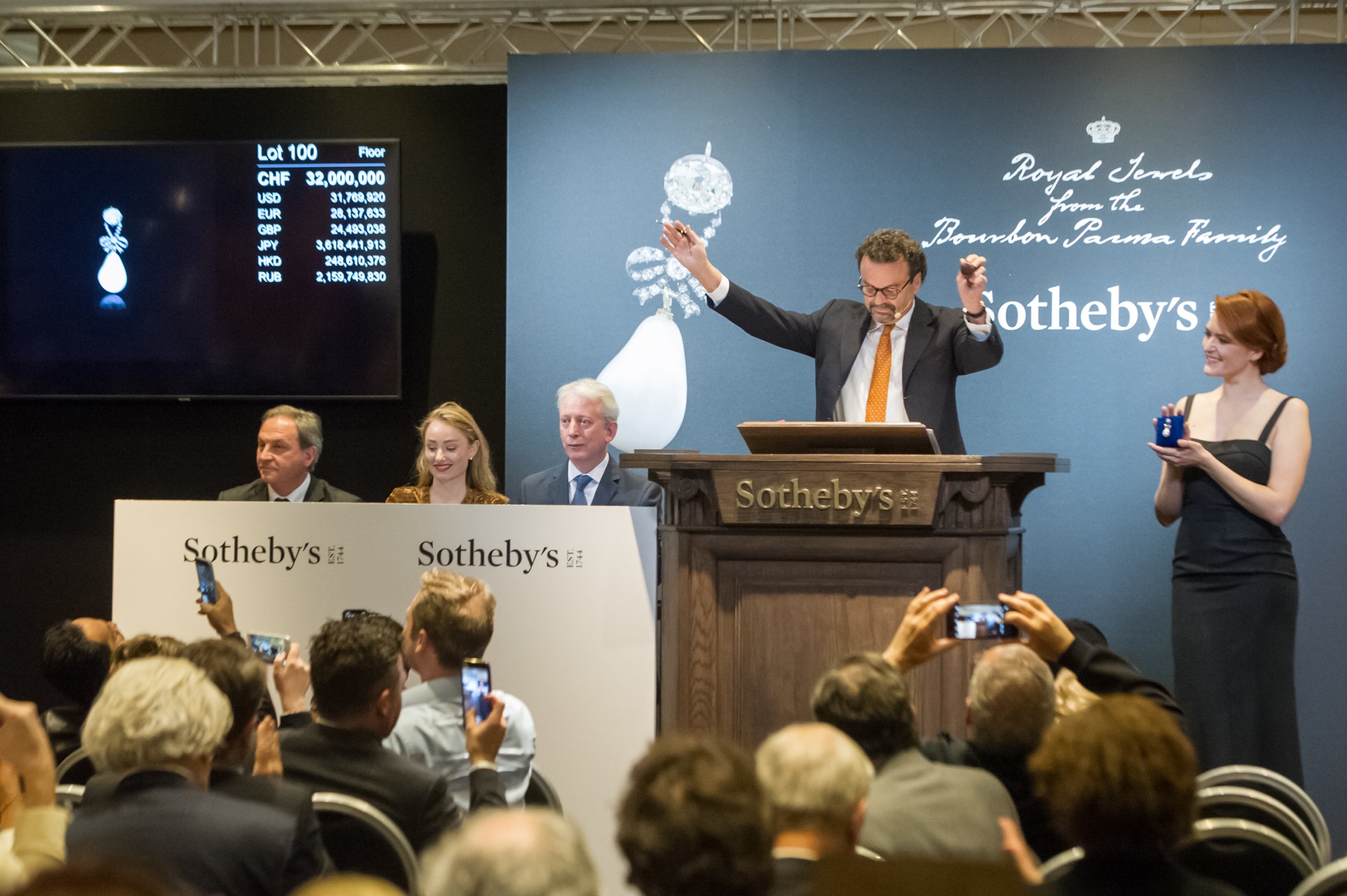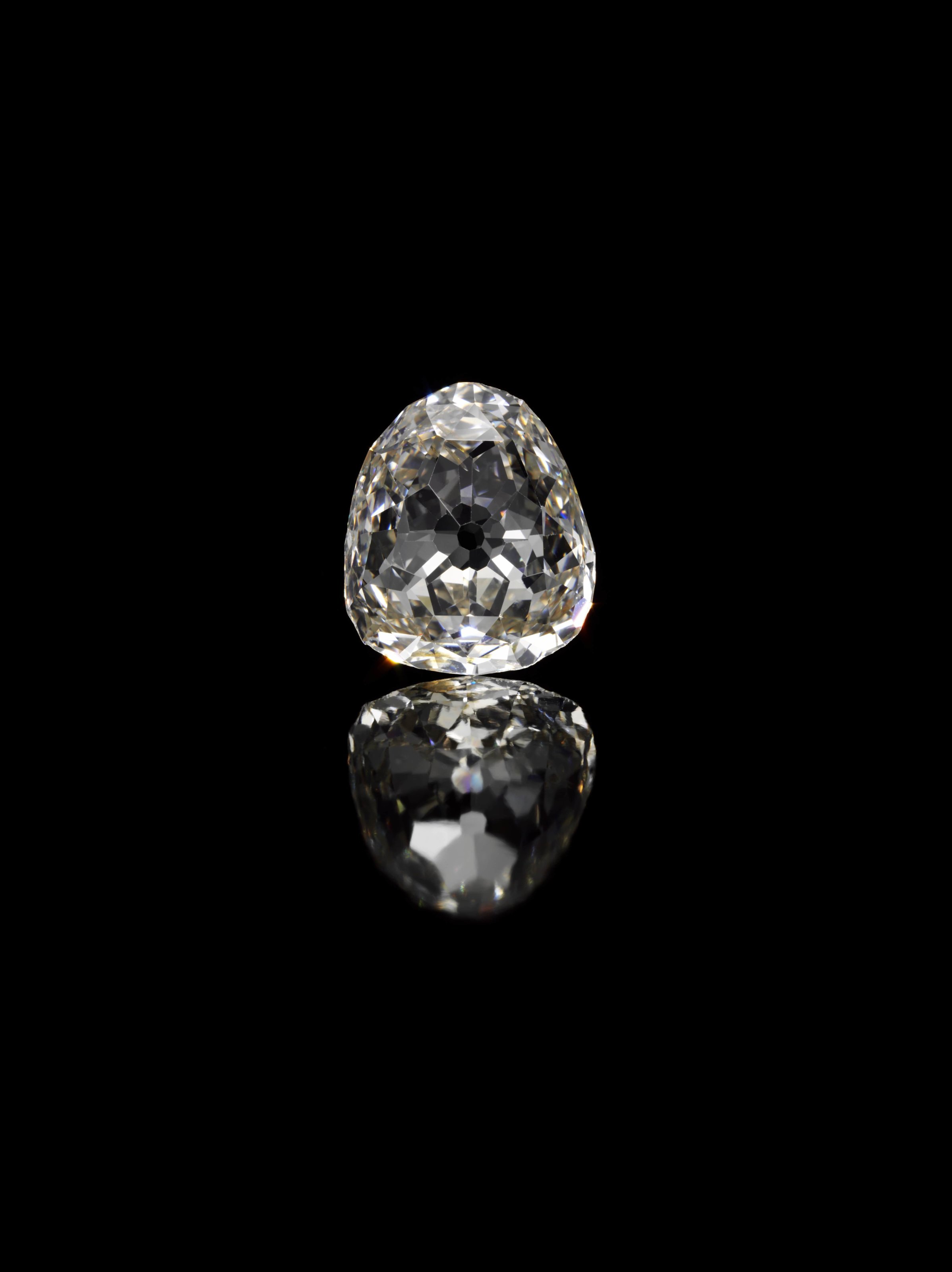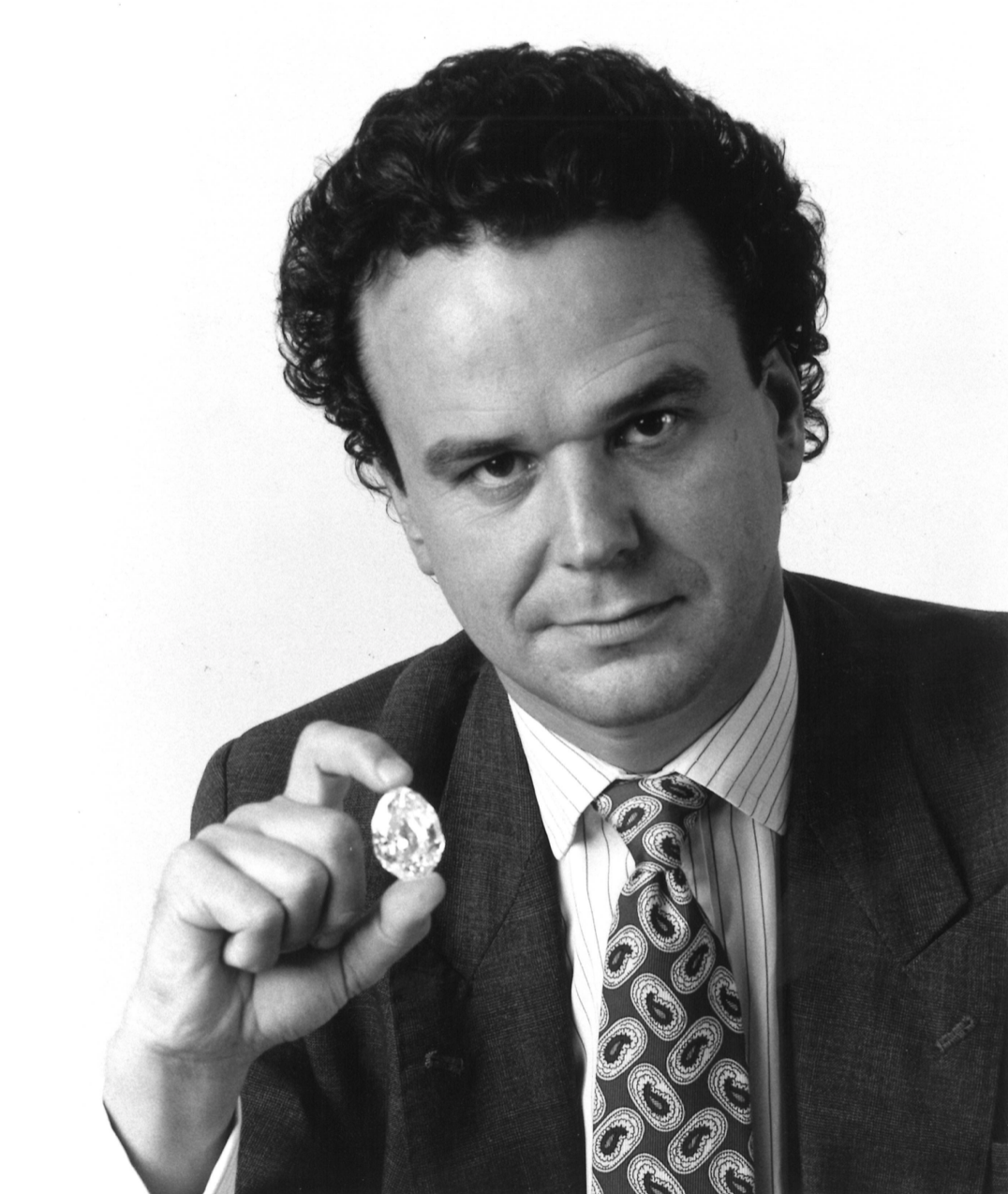In the Diamond Mind: David Bennett

I found my conversation with David Bennett filled with seeming anomalies. Named by Art + Auction one of the 10 most powerful people in art, the high-powered auctioneer is the first to have sold a diamond of more than 100 carats. His thrill at work is the hunt for treasure and his focus this year is the continued digital transformation of the jewelry department at Sotheby’s. But there is more to Mr. Bennett than jewelry and business. He counts watching the sunlight change in a room among his greatest indulgences, and finding love inscriptions on jewelry owned by the Duchess of Windsor among life’s mind-blowing moments. When I learned that Mr. Bennett has a passion for philosophy and astronomy, as well as gems and jewels, his story fell into place.
Q: What’s the story of your first diamond?
While not exactly my first diamond, there’s the story of my first high-stakes diamond. When I moved to Geneva in 1989 as head of Sotheby’s Jewelry Europe, I noticed several significant diamonds on the market. They had been recently mined, they were extraordinary and the buyer could name the stones. At the time, no auction house had attempted to sell diamonds of their size before, and certainly not for more than $10 million. In 1990, I took a risk and offered one of the diamonds for sale. Now known as the Mouawad Splendor, the 100 carat, colorless, flawless pear-shape diamond sold for a record $12.6 million. Soon after, I sold two more large diamonds, creating a precedent that is now more common in the auction business. The third of these diamonds is the Star of the Season, which sold for $16.5 million, a sum not to be surpassed for the next 17 years.
Q: What excites you most at the moment?
We’re emerging from a strange, unprecedented time, and it feels good to be gradually returning to some of the “normality” we took for granted. About a month ago, we held our flagship Geneva auction and Hong Kong was soon after. Leading up to them, it was exciting to meet with people again and to show them jewels included in the sale.
Beyond that, this spring has allowed a period of reflection and re-evaluation. When an unpredictable event like the pandemic happens, it is humbling somehow. It reminded me of things I had lost sight of. While a challenging time, I am excited about the reset caused by the lockdown and the new creative energy that, paradoxically, has come from being restricted.

Q: What is your intention for the year ahead?
At Sotheby’s, a priority is to expand our online offering for clients. Live sales are still important, but we plan to hold a growing number online. Jewelry is one of our most popular categories online, and we have seen very strong results from expanded online sales during the last few months, including a number of new records, which is wonderful. We have developed a strong digital strategy over the past five years and we’re constantly improving our online platform. This is a moment of digital transformation for the business, and collectors are keen to embrace new, fast and dynamic ways to transact.
Q: What’s your greatest indulgence?
Nowadays, “luxury” is having the time to take pleasure in small things. My greatest indulgences are a wonderful meal shared with friends, or being able to stop for a moment and watch the light change as the sun sets and casts a shadow across a room. I get great pleasure from fleeting moments like these, which might have been missed had one not taken the time to pause.
Q: What diamond destination is at the top of your list?
I would have to say Golconda. I have visited India many times and it is a wonderful country for lovers of gemology. For centuries, this region was the primary source for diamonds and it produced some of the world’s most famous stones, like the Koh-i-Noor and the Hope diamonds. Golconda diamonds are breathtakingly clear, and so prized they have made their way to the four corners of the Earth, joining the collections of maharajas, kings and emperors. As production ceased during the late 19th century, Golconda diamonds are connected to a different time.
Golconda has a special significance for me. During 2012, I had the privilege of selling the Beau Sancy, a Golconda stone whose first owner was Marie de Medici. She chose it as the centrepiece of the pearl and diamond crown she wore for her coronation in 1610, following her marriage to Henri IV, one of the great kings to rule France. It is evidence of the aura of majesty conveyed by diamonds, especially those from Golconda.

Q: What inspired you to pursue a career in jewelry?
It was serendipity, really. At university, I took a degree in Philosophy and my ambition was to be a film director. My father, who would be 105 years today and was slightly old fashioned, was horrified. He thought this meant, “HOLLYWOOD.” He cunningly introduced me to a friend who worked at Sotheby’s and convinced me to join the auction house’s one-year training programme. That was 1974 and by year end, the oil crisis had plunged the United Kingdom into the Three-Day Week. When a job came up in the jewelry department at Sotheby’s my father’s friend advised me to take it due to the uncertain times. I knew absolutely nothing about jewelry, but it sounded rather glamorous. I took the job as a trainee cataloguer and that’s where it all began.
Q: What moment still blows your mind?
I will never forget going to Paris in 1986 to examine the jewels of the Duchess of Windsor, which were in a vault deep in the Banque de France. At the time, everyone knew the story of the Windsors, arguably the greatest love story of modern times, and how one man gave up the throne of Great Britain to be with the woman he loved. We knew we would find exquisite pieces commissioned from the greatest jewelry houses like Cartier and Van Cleef & Arpels in the vault. What we didn’t know was that we would find secret inscriptions with intimate, moving messages of love by both the Duke and the Duchess on many of the pieces. The collection of jewels took on a new dimension, suddenly bringing these two people and their incredible story to life. The sale became one of the jewelry auctions of the century, achieving, I think, five times the pre-sale estimates.
Q: What life lesson has been the hardest earned, and taught you the most?
This will be a short answer: patience! I must admit that I am still learning patience, both in everyday life and in work. I am very fortunate that my work is a treasure hunt, in which one never knows what beautiful diamond or jewel is around the corner. For someone lacking in patience, the thrill of the hunt is especially exciting.
Q: What advice would you give your younger self?
When I finished university, my passion was philosophy and astrology, and I did not recognize a link between those disciplines and jewelry. Over time, I immersed myself in the world of jewels, studying gemology, precious metals and even alchemy. Gradually, I have realized that all these different elements are interconnected and that my career has been guided by the important relationships between precious stones, individuals and planets. If I could, I would tell my younger self, “You are not moving away from your intended path; you are on the right track.”
Q: What’s next for diamonds?
We humans have been fascinated by diamonds since they were first discovered in India in the 4th century BC. Each stone that we are lucky enough to handle was created thousands of years ago by an extraordinary process deep within the Earth. Throughout history, diamonds have sparked wars, brokered peace, granted regal status and, importantly, brought great beauty into our lives. During my career, I have been thrilled to see more and more people seeking and gaining a better understanding of what makes these natural treasures so exceptional and rare. I see no reason why that trend should not continue in diamonds.
